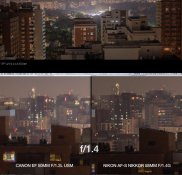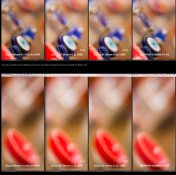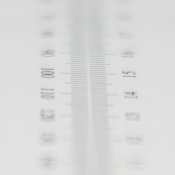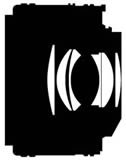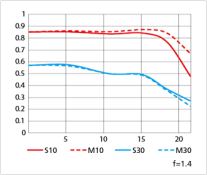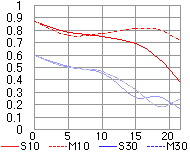They aren't even similar for the intended use of the 58G, which IMHO is environmental portraits. What the 58G shines at is how it transitions to OOF
The AI-S 58mm F/1.2 NOCT was manufactured 1977-1997, after it was discontinued collectors became crazy and ebay prices peaked $4000 and more for used samples.
At Nikon they grasped their heads... Was it a good opportunity to make new (wide open) no Coma expensive glasses ?
But when the 58mm 1.4G product was ready to ship (2013) DSLRs had low noise at high ISO and it was possible to stop two or three clicks to get general sharpness at night... and at that point you require no expensive aespheric design to avoid Coma.
Solution... remove the NOCT stamp and promote it as a portrait lens... you have to sell that... Intended use changed, but not in a convincing way (IMO). That expensive construction of the 58mm 1.4G was intended for night photography to subtitute the NOCT, and that huge overcost has no advantage for portraits IMO, it performs better at night wide open, but it the same way than the 50mm 1.4G for portraits, similar bokeh. I see not much a difference.
Environmental portraits vs focus transitions
Are transitions important in an environmental portrait ? Well, subject is far and you won't see the transitions in the subject's face, transitions in the face are critical in a head&shoulders portrait, but in an environmental portrait you may even have no transition from subject to a more distant background. Still for sure you may value transitions, but many times what counts the mosr is a high quality bokeh.
Anyway those transitions in the 58G are pretty equivalent to the 50mm F/1.4G for 1/4 of the price. The focal is different, OK.
Sure the 58 1.4G is a good portrait lens, but at $1500 I've better choices.
Sorry I didn't catch you read DXOmark reviews, nevermind...
IMO, DXO offers to me limited information about lenses, bokeh is much evaluated and it's the most important feature to me, but DXO has tons of useful information, I mostly use the sharpness vs field vs aperture maps and the focal vs aperture vs sharpness maps, which I find extraordinarily informative and useful, for example this graph shows the safe usage conditions of a consumer lens:
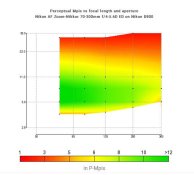
Regarding their Perceptual Pixel Count rating I have to say that's quite useful to compare in relative terms, knowing how a lens I know is rated I can figure how another lens will be. Still sharpness, personaly, is the least I value of a lens.
_____
I agree with these conclusions:
_____
Tansitions
To me this is charted in the Through Focus MTF graphs, a Super-Baltar has a nice footprint there.
Last edited:





